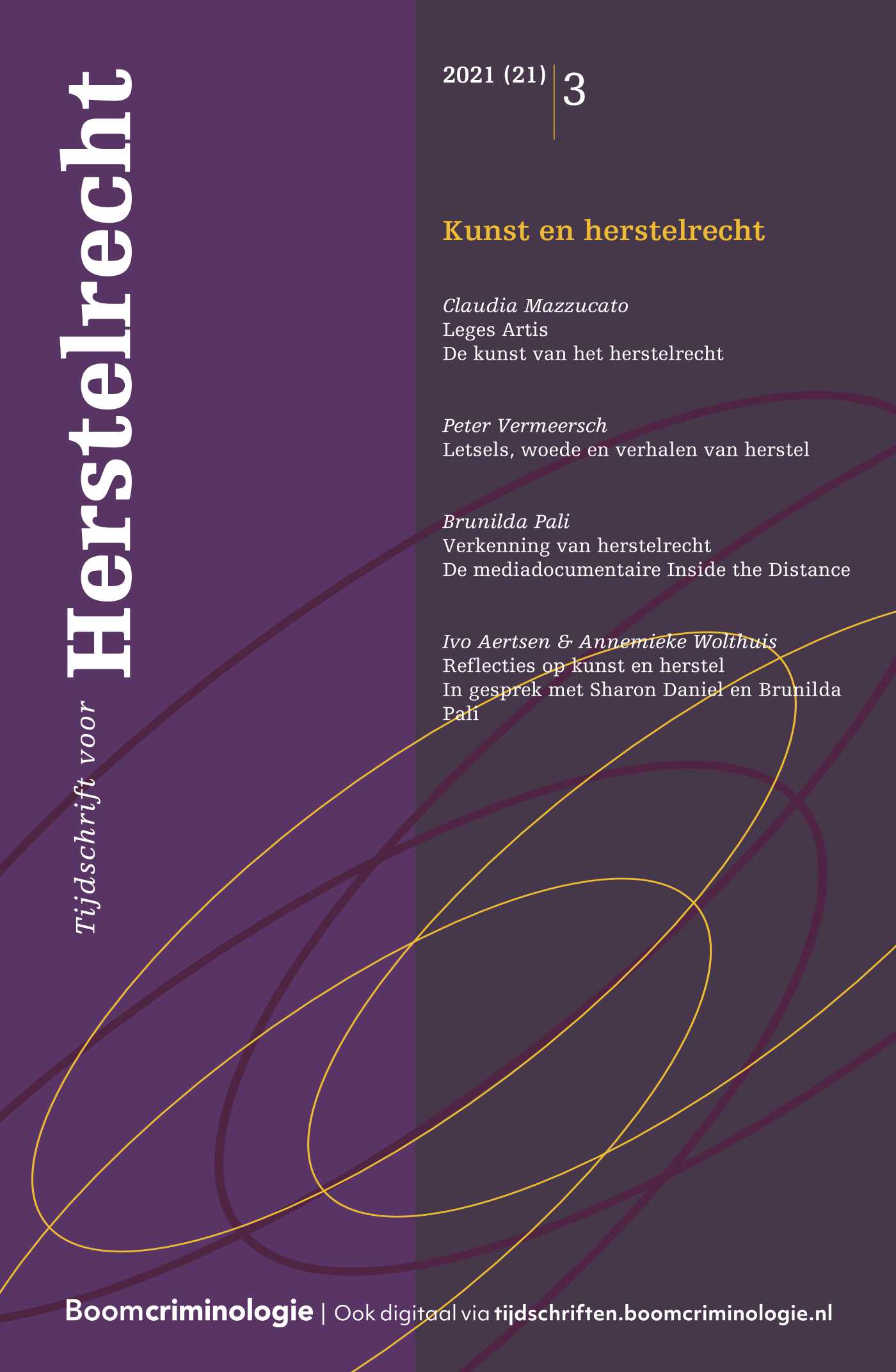|
Whereas the starting point of victimisation is clearly marked by a co-occurence of harm and wrong, the end of victimhood is not as straightforward. What is more, because victimisation is a social construct, the label of ‘victim’ is established in social interaction, meaning that third party observers have a role in the understanding of the (limits of) victimisation. In this article, I suggest that third party observers may understand attempts at restorative justice, more specifically, an apology, as an indicator of recovery of the victim. If this is true, they may expect the victim to decrease emotional display that signals victimisation after receiving an apology. If the victim continues to display similar signals of victimisation, this may result in negative victim-oriented responses. In an exploratory repeated measures vignette study, I show that third party observers evaluate the victim less positively after the victim received an apology than before they received this apology. The results imply that in understanding the (limits of) victimhood, we should consider the dynamics between victim and offender but also a broader circle of third-party observers. This is also important for restorative justice. |


Tijdschrift voor Herstelrecht
Meer op het gebied van Mediation en herstelrecht
Over dit tijdschriftMeld u zich hier aan voor de attendering op dit tijdschrift zodat u direct een mail ontvangt als er een nieuw digitaal nummer is verschenen en u de artikelen online kunt lezen.
| Column |
Resiliëntie platforms – Weerbare slachtoffers, dociele daders? |
| Auteurs | Janny Dierx |
| Auteursinformatie |
| Redactioneel |
De omgeving van de mens is de medemens |
| Auteurs | Alice Bosma, Janny Dierx en Sven Zebel |
| Auteursinformatie |
| Artikel |
|
| Trefwoorden | restorative justice, victimisation, apology, emotional display, third-party observers |
| Auteurs | Alice Bosma |
| SamenvattingAuteursinformatie |
| Artikel |
Herstel van het morele imago van daders als drijfveer voor bemiddelingDe ervaringen van bemiddelaars |
| Trefwoorden | mediators, victim-offender mediation, willingness to participate, offender-intentions, moral image |
| Auteurs | Sven Zebel, Leonie Kippers en Elze Ufkes |
| SamenvattingAuteursinformatie |
|
Compared to victims, relatively little is known about the role of offenders’ emotions, needs and intentions in their (voluntary) decision to participate in victim-offender mediation (VOM). Insight into this decision process among offenders is important, as it may explain (part of) the positive outcomes participation in VOM can have for them, as well as for victims. Based on the work of Shnabel and Nadler (2008; 2015), we predicted that the need to restore their moral image is an important, underlying explanation for why offenders participate in VOM. To test this, we sampled 91 victim-offender mediation cases from the Dutch mediation agency Perpectief Herstelbemiddeling based on pre-defined characteristics. We approached the mediators who handled these cases and asked them to indicate the emotions, need to restore the moral image and intentions of the offenders in these cases. Consequently, we examined how these variables predicted offenders’ actual willingness to participate (or not) in these cases. Results indicated that the need to restore the moral image is indeed an important underlying factor in offenders’ decision to participate in VOM: according to mediators’ answers, offenders who felt more remorse about their crime, felt a stronger need to restore their moral image, which in turn predicted a stronger intention to apologize and help the victim. This intention to apologize and help emerged as the strongest, direct predictor of offenders’ willingness to participate. The relevance of Shnabel and Nadler’s needs-based model of reconciliation for VOM is discussed as well as important future research questions that remain. |
| Artikel |
Belofte maakt schuldNederlandse Spoorwegen en schadevergoeding voor overlevenden van WOII-transporten |
| Trefwoorden | Victimization, Recognition, restorative measures, compensation, Holocaust |
| Auteurs | Manon Bax en Mijke de Waardt |
| SamenvattingAuteursinformatie |
|
The authors discuss reparations, with particular attention to programs launched to do justice to the victims of the Holocaust. While focusing on the compensation scheme of the Dutch Railways to the victims of the transports during the Second World War, they examine in which respects the suffering and victimization of some victim groups are not or insufficiently recognized. They compare the establishment of the compensation scheme and the procedure for repayment with findings from victimological research into the recognition of victimization and reparation, including the symbolic value of compensation, recognition of suffering, inclusion and exclusion of stakeholders, and victim participation. The analysis concludes with a few considerations about how secondary victimization could have been prevented. |
| Interview |
Vormingswerker, rechtstheoreticus en herstelrechtelijk pionier – Interview met John Blad |
| Auteurs | Renée Kool en Annemieke Wolthuis |
| Auteursinformatie |
| Signalement |
Symposium Herstelgericht straffen en reclasseren |

